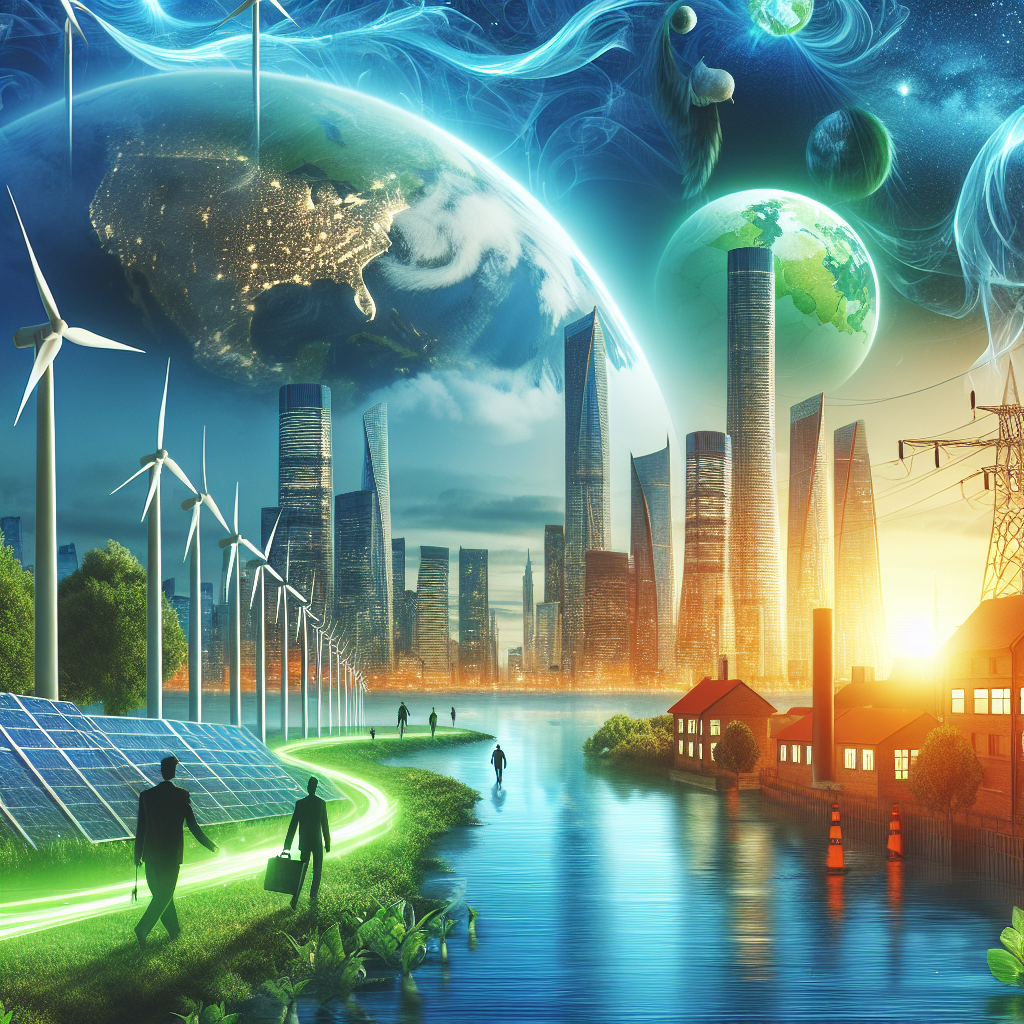-
Table of Contents
- Introduction
- The Importance of Green Energy
- Leading the Way: Developed Countries
- Germany: Energiewende
- Denmark: Wind Power Pioneers
- United States: The Clean Energy Revolution
- Challenges and Solutions
- Intermittency and Grid Integration
- Cost Competitiveness
- Public Acceptance and Community Engagement
- Conclusion
Introduction

The world is facing a pressing challenge – the need to transition to green energy sources in order to combat climate change and ensure a sustainable future. This global shift towards renewable energy, known as the Green Energy Revolution, is crucial for reducing greenhouse gas emissions and mitigating the impacts of climate change. In this article, we will explore how developed countries are tackling this revolution and the strategies they are implementing to achieve a greener and more sustainable future.
The Importance of Green Energy
Green energy, also known as renewable energy, is derived from natural sources that are constantly replenished, such as sunlight, wind, water, and geothermal heat. Unlike fossil fuels, which are finite and contribute to environmental degradation, green energy sources have minimal environmental impact and produce little to no greenhouse gas emissions.
The transition to green energy is vital for several reasons. Firstly, it helps combat climate change by reducing carbon dioxide emissions, which are the primary cause of global warming. Secondly, it reduces dependence on fossil fuels, which are not only finite but also subject to price volatility and geopolitical tensions. Lastly, green energy promotes energy security and independence, as countries can generate their own power from renewable sources, reducing reliance on imported energy.
Leading the Way: Developed Countries
Developed countries have been at the forefront of the Green Energy Revolution, recognizing the urgency of transitioning to sustainable energy sources. These nations have the financial resources, technological capabilities, and political will to invest in renewable energy infrastructure and implement policies that promote its adoption.
Germany: Energiewende
Germany is widely regarded as a global leader in renewable energy. The country’s Energiewende, or energy transition, aims to phase out nuclear power and fossil fuels while increasing the share of renewable energy sources in the energy mix. Germany has set ambitious targets, such as achieving 65% renewable energy by 2030 and becoming carbon-neutral by 2050.
To achieve these goals, Germany has implemented various policies and initiatives. Feed-in tariffs were introduced to incentivize the production of renewable energy, guaranteeing fixed payments for electricity generated from renewable sources. The country has also invested heavily in research and development, fostering innovation in renewable technologies. Furthermore, Germany has established a robust grid infrastructure to accommodate the intermittent nature of renewable energy sources.
Denmark: Wind Power Pioneers
Denmark is renowned for its leadership in wind power. The country has set a target of becoming fossil fuel-free by 2050 and aims to generate 100% of its electricity from renewable sources. Wind energy plays a crucial role in Denmark’s energy transition, with wind turbines dotting the country’s landscape.
Denmark’s success in wind power can be attributed to a combination of factors. The government has provided long-term support through feed-in tariffs and tax incentives, encouraging investment in wind energy projects. Additionally, Denmark has prioritized research and development, leading to technological advancements in wind turbine design and efficiency. The country also benefits from its geographical location, with strong and consistent winds that make wind power a viable option.
United States: The Clean Energy Revolution
The United States, as one of the world’s largest energy consumers and greenhouse gas emitters, plays a crucial role in the Green Energy Revolution. While progress has been slower compared to some European countries, the U.S. has made significant strides in recent years.
Several states in the U.S. have implemented renewable portfolio standards, which require utilities to obtain a certain percentage of their energy from renewable sources. Additionally, federal tax credits have incentivized the deployment of solar and wind energy projects. The Biden administration has also committed to rejoining the Paris Agreement and investing heavily in clean energy infrastructure, with a goal of achieving a carbon-free power sector by 2035.
Challenges and Solutions
While developed countries have made significant progress in transitioning to green energy, they still face challenges that need to be addressed.
Intermittency and Grid Integration
One of the main challenges of renewable energy is its intermittent nature. Solar power generation depends on sunlight, while wind power relies on wind availability. This intermittency poses challenges for grid stability and integration.
To overcome this challenge, countries are investing in energy storage technologies, such as batteries and pumped hydro storage. These technologies store excess energy during periods of high generation and release it when demand exceeds supply. Additionally, smart grid technologies and advanced forecasting systems help optimize the integration of renewable energy into the grid.
Cost Competitiveness
While the cost of renewable energy has significantly decreased in recent years, it still faces competition from fossil fuels, which have well-established infrastructure and economies of scale. To enhance cost competitiveness, countries are implementing policies such as feed-in tariffs, tax incentives, and competitive bidding processes to drive down the cost of renewable energy generation.
Public Acceptance and Community Engagement
The successful deployment of renewable energy projects relies on public acceptance and community engagement. Some communities may have concerns about the visual impact, noise, or potential environmental effects of renewable energy installations.
To address these concerns, countries are implementing community engagement strategies, involving local communities in the decision-making process, and providing economic benefits to host communities. Transparent communication and education about the benefits of renewable energy also play a crucial role in gaining public acceptance.
Conclusion
The Green Energy Revolution is a global imperative, and developed countries are leading the way in transitioning to renewable energy sources. Through ambitious targets, supportive policies, and technological advancements, these nations are making significant progress in reducing greenhouse gas emissions and promoting a sustainable future.
However, challenges such as intermittency, cost competitiveness, and public acceptance need to be addressed to accelerate the transition to green energy. By investing in research and development, implementing effective policies, and engaging communities, countries can overcome these challenges and pave the way for a greener and more sustainable world. The Green Energy Revolution is not only an environmental necessity but also an opportunity for economic growth, energy security, and a better future for generations to come.




